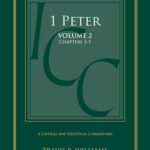Does Matthew 24 Describe the Rapture of the Church (Part 2)?
In this series, we are examining nine arguments made by John Hart in his essay, “Jesus and the Rapture: Matthew 24,” which appeared in Evidence for the Rapture: A Biblical Case for Pretribulationism. In the last post (available here), we examined Hart’s first argument in support of the view that Jesus describes a pretribulational rapture of believers in Matthew 24:37–41. He argued that Matthew 24:29–31 describes the return of our Lord Jesus to earth after the eschatological tribulation (as opposed to something that occurred in the first century, such as the Jewish War) but that 24:37–41 describes his earlier rapture or “snatching away” (1 Thess 4:17) of believers prior to this specific tribulation. One way that we know that the subject has shifted to a different event in verses 37–41 is that signs precede the event in verses 29–31, while the event in verses 37–41 comes without any warning signs. Therefore, they appear to be two different events in predicted history.
Many of those who believe in a pretribulational rapture (myself included) have been hesitant (myself included again) to see that rapture in verses 37–41 because, whatever verses 37–41 describe, it would appear to follow the events of verses 29–31. Verses 29–31, followed by verses 37–41, seems logical! However, beyond the signs vs. non-signs argument above, might there be other indicators that we are not supposed to read verses 29–41 chronologically?
Argument #2: The Opening Phrase in Verse 36
Hart’s second argument is that Matthew uses a structural marker to indicate that verse 36 begins a new section where Jesus is speaking of a related but different topic. Or, to put it more simply, the disciples asked Jesus two questions in Matthew 24:2, and Jesus switches which question he is answering in verse 36.
The two first words in verse 36 (περί δέ) are translated as “but about” in the NIV and NRSV but are also commonly rendered as “but concerning” (ESV) or “now concerning” (CSB). As Hart points out, when this phrase appears “at the very beginning of a sentence as it does here, it marks a new section of thought that reaches back to previous material, often to resume an unanswered or unspoken question” (p. 54). For example, the Apostle Paul uses the same phrase in 1 Thessalonians 5:1 when he transitions from the description of the rapture in 1 Thessalonians 4:13–18 to the discussion of the timing of the Day of the Lord in 5:1–11 (“Now concerning the times and the seasons, brothers…,” ESV).
To cite another well-known NT example, Paul uses the small phrase multiple times in 1 Corinthians to indicate that he is switching to a new topic related to the Corinthian church (7:1, 25; 8:1; 12:1; 16:1, 12; see also Acts 21:25).[1] Paul is going through a list (at least a mental one) of issues, some of them appearing to be questions raised by the Corinthians, and this phrase indicates that he is switching to the next item on that list.
Since both Matthew 24 and 1 Thessalonians 4–5 deal with similar prophetic patterns, Hart concludes that the Apostle Paul, when writing to the Thessalonians, was likely influenced by our Lord’s use of this transitional phrase in his Olivet Discourse. Both men also appear to be using the phrase in a very similar manner. In Matthew 24:36, Jesus transitions from what can be known (the signs leading up to his appearance in “power and great glory”) to what cannot be known (the timing of the Day of the Lord). In 1 Thessalonians 5:1, Paul does the opposite and transitions from what was previously not known by the Thessalonians (“we do not want you you to be uninformed,” NIV) to what was previously known, i.e., that the Day of the Lord will arrive suddenly like a thief in the night.
Therefore, Hart’s second argument is that, in addition to the contrast between signs and non-signs described in the first argument, there is also a structural marker that indicates that Jesus has switched to a different but related topic in verses 36 and following. So, we are not supposed to read verses 29–41 chronologically. I find the connection to 1 Thessalonians 4–5 very likely, but the argument regarding the transition to a new question in verse 36 stands either way.
If I can add my own illustration, it would be like describing an upcoming vacation to a co-worker. Your co-worker has heard that you are going on this vacation (maybe he or she wishes they had a vacation too!), and they ask you, (1) “When are you going?” and (2) “What will you do on vacation?” or, to make it closer to the Olivet Discourse, “What will this vacation look like?” You might, for your own good reasons, answer the second question first (we will have to think some about how this might fit into the Olivet Discourse). In response to the second question, you proceed to describe lots of things that will occur during the vacation and perhaps some things that will not (no checking emails!), and you even describe things that will happen at the very end of it. As you are answering that second question about the nature (“signs”) of your vacation, you may tell the story in roughly chronological order. However (and here is where verse 36 comes in), you may then switch to the first question and describe the timing of this eagerly anticipated vacation, and you may even describe the initial events that will kick off the vacation, such as we are getting into a plane on such and such a date.[2] Even though you are describing the coming or initiation of the vacation following your description of the entire vacation, including its end, your listener knows that your second response is not meant to describe things that chronologically follow after the things described in the first response. Your switch to answering the other question is the clue that a break in your chronological account occurred.
My illustration is likely flawed in some ways, but I think it captures what Hart is arguing. Jesus answers the disciples’ second question about signs in verses 4–35. He is telling us what the “End” will look like (I may put more emphasis on verses 4–14 telling us what the “End” will not look like). He then answers the first question about timing in verses 36ff (a chiastic structure). Our Lord Jesus’ answer regarding the timing, a response that day-setters everywhere should heed, is “No one knows, not even the angels in heaven, nor the Son, but only the Father.”
I think an examination of the content of Jesus’ answers demonstrates that this proposal regarding the structure is accurate. Therefore, there does seem to be another good reason to separate the events of verses 29–31 from the events of 37–41. But there is still more to consider here.
[1]This phenomenon and its significance in the structure of Jesus’ Olivet Discourse is fairly widely acknowledged. See, for example, the commentary by France (p. 890). It is also a key feature of Gibbs’ published dissertation and the interpretation of the Olivet Discourse in his commentary on Matthew. France and Gibbs would agree with Hart that Jesus begins to answer a different question in verse 36, but they would disagree with Hart on the identity of that question. They see the questions being answered in the order that they were asked. I think the evidence better supports Hart’s conclusion.
[2] To borrow a concept familiar to lovers of Greek grammar, you first described the event internally but then switched to describing it externally.




I appreciate Dr Meyer, but this is shoehorning a new theology from the 18th century into the natural flow of the text. This entire argument falls apart when you notice that the Day of the Lord (Gods Wrath (Revelation 6:12-18)) commences at the heavenly signs of the Sun Moon and Stars going dark, and the gathering of the Elect. (Matthew 24:29-31, 1 Thess 4:16-5:2) Joel, Isaiah 13, etc)
I see no way to make Matthew 24:29-31 a separate event from 1 Thess 4:13-18. 1 Corinthians 15:52 must be the Second Coming since it referrs to the “last Trumpet”. If this event in 1 Cor 15 is something prior to the second coming, and the second coming is marked with a trumpet call, then how is this event called the “Last Trumpet”.
My point is this, good faith exegesis will not lead someone to see a separate event in any of the traditional rapture passages. This is why many Pre Trib teachers like JMac begin with assumptions over exegesis, and then lean on Revelation 4:1 or the “falling away” in 2 Thess 2 referring to a “falling away from the earth”, which is actually embarrassing to try to explain the rapture from, especially to new believers.
Hi, Ken. Thank you for taking the time to read this and interact. I definitely do not want to “shoehorn” something into a passage. The best way that I know to avoid that is to continue working carefully through individual texts and thinking about how they all fit together with the rest of Scripture, so I’ll save some of my response for the rest of this series, where we will consider more passages. However, I’ll add a couple of quick thoughts here.
First, this series assumes and cannot completely defend the view that the coming Day of the Lord is a complex of events that will stretch over a period of time. The Day of the Lord (1 Thess 5:1; 2 Thess 2:2; 2 Pet 3:10; cf. many OT passages such as these ones in Isaiah and Joel you mentioned, some of which form the basis for Paul’s “last trumpet” language), or “Day” (Matt 24:36), or “End” (Matt 24:3, 6, 13, 14; Dan 8:17, 19; 9:26, 11:35, 40; 12:4) or “coming” (Matt 24:3; 2 Thess 2:8; 2 Pet 3:4) all seem to be different ways of describing this same complex of events, without any of these passages describing everything that will occur within it. For example, 2 Thess 2 describes the rise of a “man of lawlessness” within this Day and an “apostasy” or “rebellion” (which, as you correctly note, is very likely not a direct reference to the rapture). But 2 Peter 3:10 also says that this same Day will bring new heavens and a new earth. Many of the OT passages describe the “End” or “Time of the End” or “Day” as a time when the people of Israel are regathered from exile (the “last trumpet” idea again). In an attempt to pull these all together, I would say that this very long Day will be our Lord Jesus’ campaign to take back the direct rule of a world that rightly belongs to him.
Therefore, this series is trying to consider the timing of events within that complex after Jesus tells us that the whole package will arrive suddenly like a thief (Matt 24:36-44; cf. 1 Thess 5:1-2; 2 Pet 3:10). I’m not sure that Revelation 6:15-17 was meant to tell us everything that occurs within that Day or even the very first things that occur (on the use of the verb “has come” in v. 17 see, e.g., Fanning, Revelation, 251 note 75).
Hope that helps some, but I believe looking at the rest of Hart’s arguments will help more.
Or, Matthew 24:37–41 isn’t describing the rapture of the church at all. Have you considered that Matthew 24 is still chronological and therefore when overlayed upon Revelation, it closer lines up with the great winepress judgement? Therefore, it’s possibly a reaping and not the raputre.
Just a thought.
Hi, Stewart. Yes, that is certainly a possibility. However, because of the arguments being laid out in this series, I think perhaps a better argument can be made that the chronology breaks in 24:36, and verses 37-41 describe a gathering that takes place suddenly without any prior signs, like the coming of Noah’s flood. You bring up a good point regarding the winepress judgment in Revelation 14:17-20. Of course, since Revelation 12-14 is an interlude in John’s prophecy, it is hard to be dogmatic about how the pieces of it fit into a chronology. There is also the thorny question of whether the harvest of grain and the harvest of grapes in Revelation 14:14-20 are descriptions of two different gatherings or are different ways of describing the same gathering. Just because it is fun to include a quote from Spurgeon in any discussion, I found this sermon interesting here where he distinguishes between the two harvests of Revelation 14: https://www.spurgeon.org/resource-library/sermons/the-harvest-and-the-vintage/#flipbook/
Thanks for the response, I’ll check out Spurgeon… and then head over to read Part 3 🙂